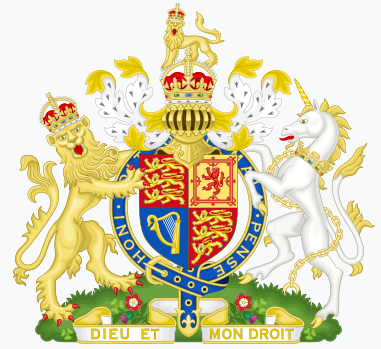#Queen #Elizabeth #Early #Life #Coronation #Coronation #Programme
.
We are so delighted to have this wonderful 1953 coronation programme in our collection. This programme was designed and printed by Odhams Press Limited, Long Acre, London, W.C. 2, England, for King George’s Jubilee Trust.
Forty enchanting pages which detail the whole ceremony, the coronation procession and everyone involved.
As you would imagine the programme is printed on high quality paper.
This piece is original and not a reproduction.
The heavily embossed front cover depicts the coat of arms of Great Britain which was the symbol of the royal sovereignty of Her Majesty Queen Elizabeth II.
Page forty is a genealogical table tracing the royal line back to William the Conqueror.
The programme is adorned with motifs which represent the Commonwealth.
HERALDIC ACHIEVEMENT OF ELIZABETH II WITH ROYAL CREST OF ENGLAND
Upon the royal helmet the royal crown proper thereon statant guardant or a lion imperially crowned also proper
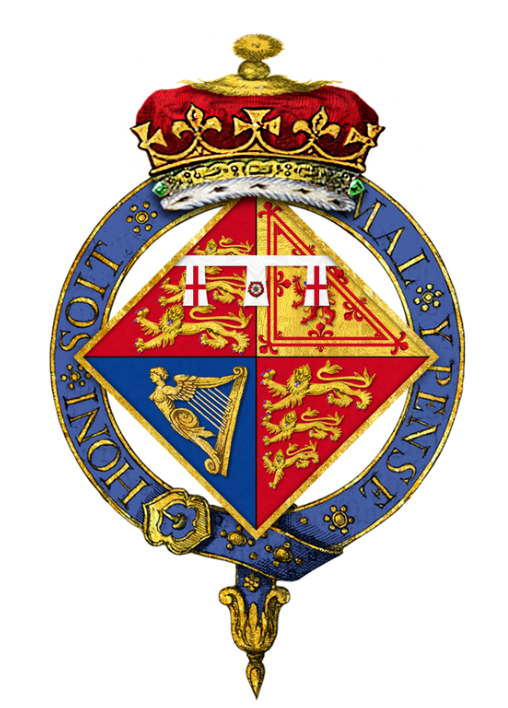
GARTER-ENCIRCLED ARMS OF PRINCESS ELIZABETH
(later Duchess of Edinburgh (1947), and Elizabeth II, Queen of the United Kingdom (1952))
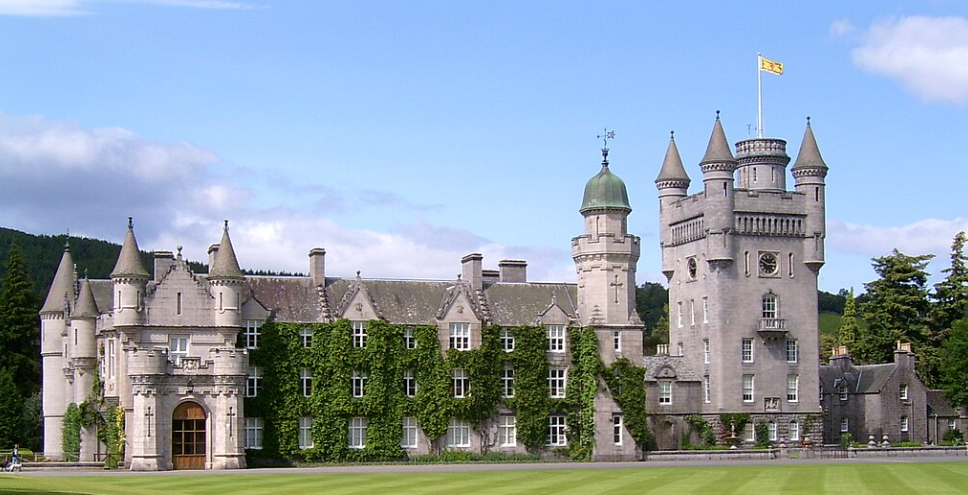
BALMORAL CASTLE
Photograph Stuart Yeates
The Royal Standard is flying and shows when this photograph was taken that HM Queen Elizabeth II was in residence.
The Royal Standard represents the Sovereign and the United Kingdom.
Many of Her Majesty’s subjects knew that her favourite country was Scotland. Her Majesty chose to spend her last days at Balmoral Castle, her favourite residence, so that she could say “goodbye” to Scotland and the Scottish people, because she knew her final resting place would be at Windsor.
Some people forgot or did not know that Queen Elizabeth II was Scottish.
She was descended from the Royal House of Stewart on both sides of her family.
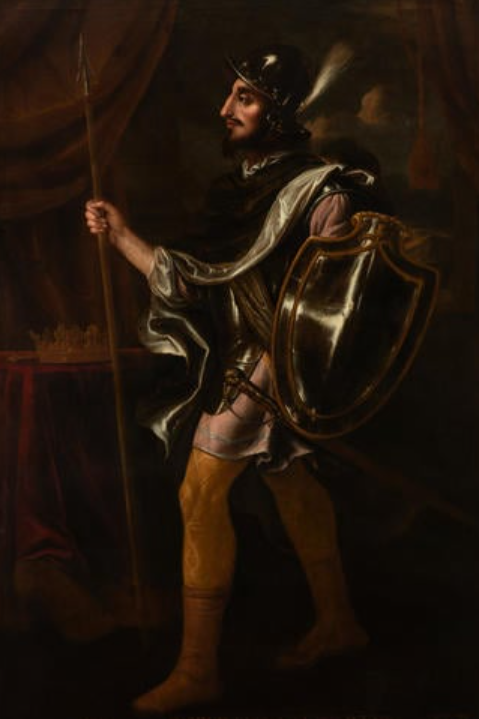
ROBERT II KING OF SCOTLAND
March 2 1316 – April 19 1390
Artist – Jacob Jacobsz de Wett II
Oil on canvas
Copyright Royal Collection Trust
Her Majesty’s parents shared a common ancestor in Robert II, King of Scots.
Robert II reigned from 1371-1390. Robert II was the son of Walter Stewart and Marjorie Bruce, daughter of Robert the Bruce, King of Scotland. Through her father, King George VI, Queen Elizabeth II was directly descended from James VI of Scotland. Through her mother’s family, the Bowes-Lyons, Earls of Strathmore, she could trace her ancestry back through generations of Scottish nobility to Sir John Lyon, Thane of Glamis, who married Robert II’s daughter in the fourteenth century.
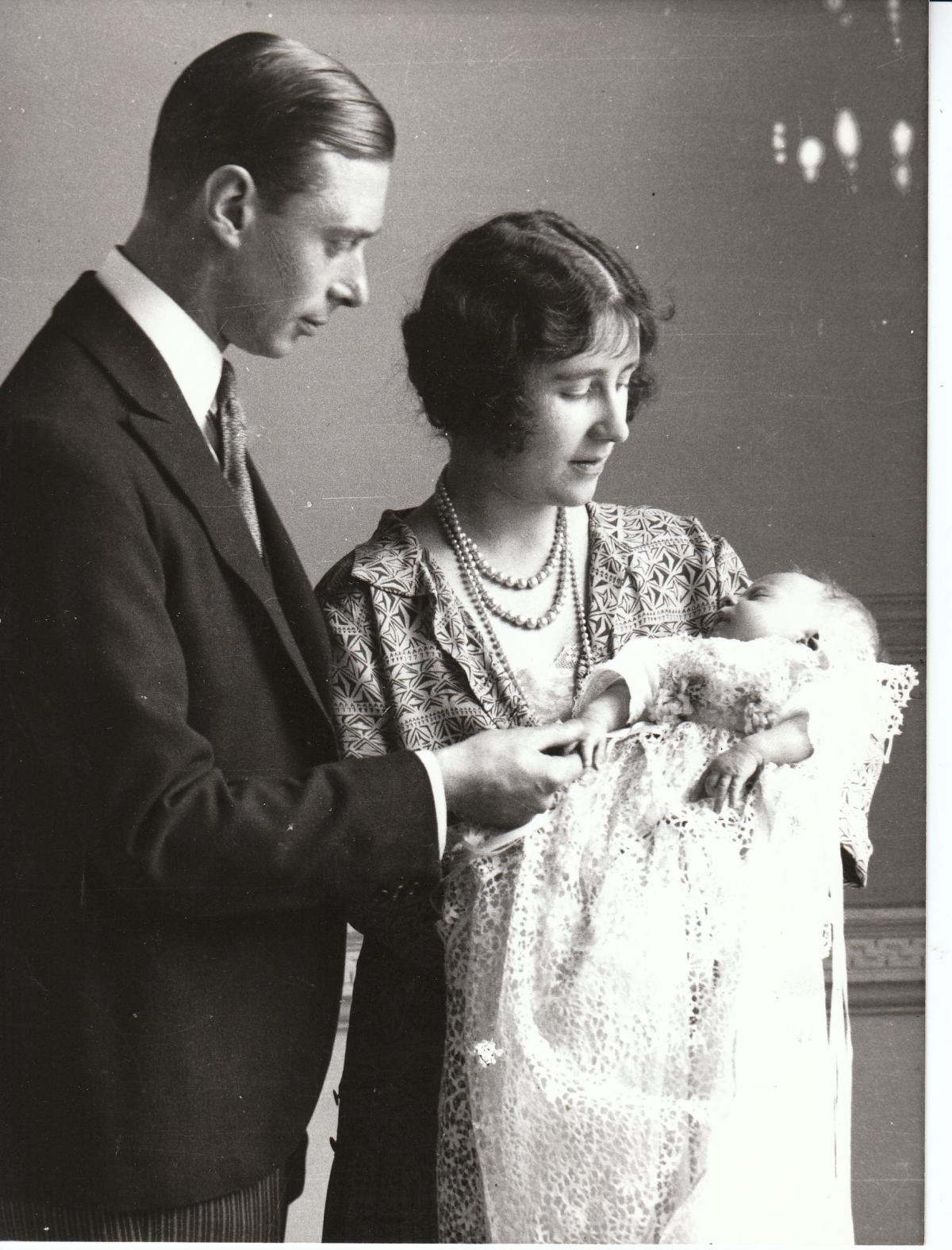
THE DUKE & DUCHESS OF YORK WITH PRINCESS ELIZABETH
When Princess Elizabeth was born there were no expectations that she would ascend the throne of Great Britain. Princess Elizabeth was born at 2.40am on 21 April 1926 at 17 Bruton Street in Mayfair, London.
Perhaps her early years without the expectation of such exaltation gave her such charm and an ability to relate to all people. It is doubtful that someone without a common touch would have been able to appeal to so many people all across the world.
However, on 10 December 1936, Edward VIII executed an Instrument of Abdication which was given legal effect the following day when Edward gave Royal Assent to His Majesty’s Declaration of Abdication Act.
From the age of 10 Princess Elizabeth knew her fate. Her whole life changed and she went on to dedicate her time here on earth to service.
Most people would say that Queen Elizabeth II had a faultless reign.
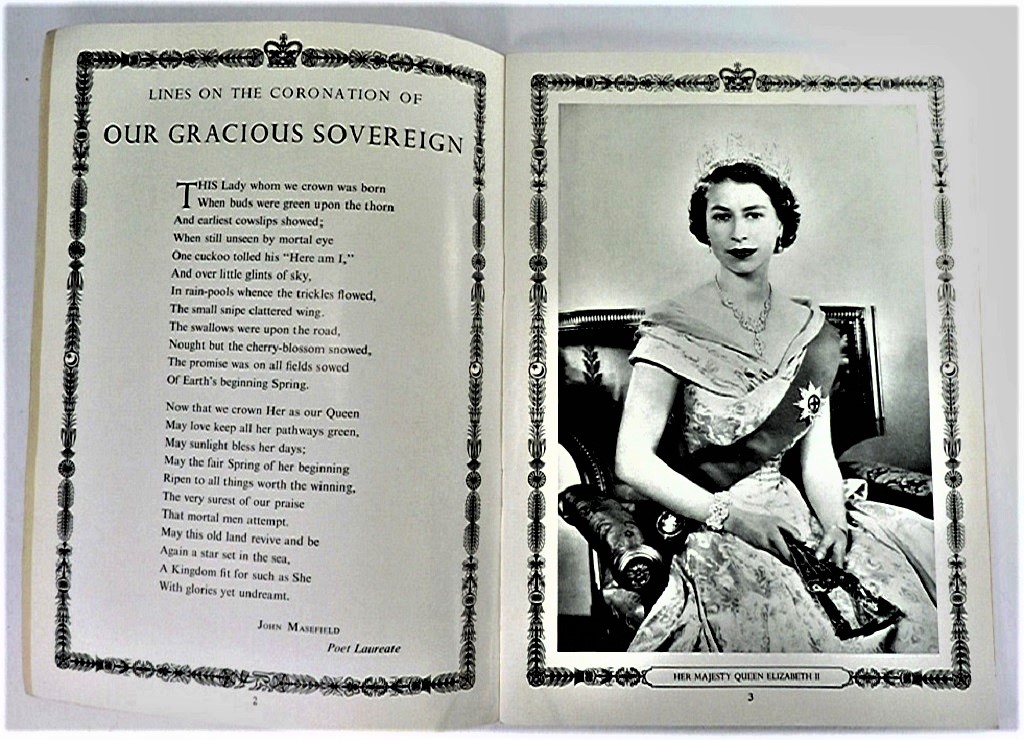
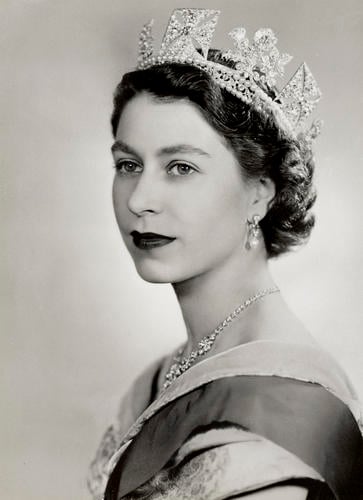
H. M. QUEEN ELIZABETH II
© Royal Collection Trust
We are so delighted to be able to attribute this portrait to Dorothy Wilding. Wilding took a series of portraits twenty days after The Queen’s accession. This was not a new experience for her as she was the royal photographer for the official portraits at the Coronation of King George VI in 1927.
Her work gained her the Royal Warrant in 1943. She was the first female photographer to receive a Royal Warrant. These wonderful portraits were taken to produce official images for coins, stamps and bank notes.
One of the series of these portraits hung in every British embassy in the world.
This portrait, or variations of it, are sometimes seen on 1950s collectibles.
Below we can see one such collectible.
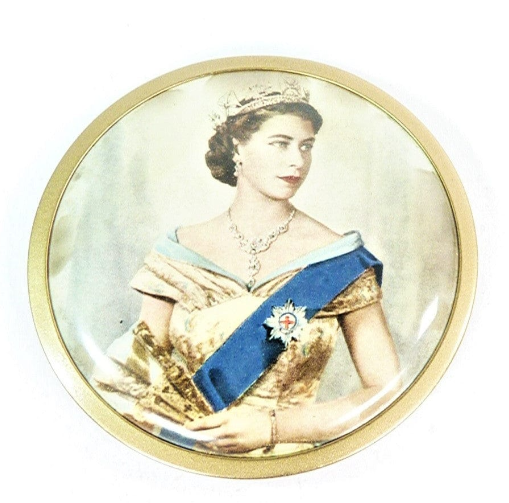
MELISSA BRAND CORONATION SERIES POWDER COMPACT
This splendid Melissa compact mirror was made as part of The CORONATION Series by Searchlight Products (Engineers) Ltd.
HM Queen Elizabeth II is depicted wearing the sash of The Most Noble Order of the Garter. The star is pinned to the sash. The star was introduced by King Charles I. The enamelled star is the heraldic shield of St George’s Cross encircled by the Garter which is inscribed Honi soit qui mal y pense. The translation of this reads as shame on him who thinks evil of it or curse against those who wish you harm. This is the motto of the Most Noble Order of the Garter, a British order of knighthood. The shield is encircled by an eight-point silver badge.
Her Majesty is wearing The Diamond Diadem.
The pictorial inlay is card printed with ink. It is from an original postcard. The postcard would have had the following text printed on it before it was cut down to fit this compact:
POSTCARD CARTE POSTALE FOR ADDRESS ONLY
PRINTED IN ENGLAND by Raphael Tuck & Sons Ltd. for Lincolns-Prager (publishers) Ltd., London, W.C.1
Portrait by Dorothy Wilding
TUCK’S POST CARD
Raphael Tuck & Sons Ltd.
FINE ART PUBLISHERS BY APPOINTMENT TO THE LATE KING GEORGE VI, H.M. QUEEN ELIZABETH THE QUEEN MOTHER AND H.M. QUEEN MARY
It is extremely rare to find this compact in good condition because of its construction. The card inlay is protected by the original clear protective cover. Many of these covers were lost and so the card would have become dirty or wet and the compact would have been ruined. Paper is not durable. Also the card inlay rests on a steel plate. Many of the steel plates were not rendered to prevent rusting and so over the decades rust would corrode the metal. Eventually after many years this rust would stain the portrait to varying degrees. The metal plate on some compacts were painted with rust resistant paint which protects the metal.
You may wonder how we can attribute this compact to this maker when it is not signed and it is not presented with the original signed puff or pouch. We can be certain that this compact was part of the Melissa brand because it is exactly the same in style and dimension to other Melissa compacts we have owned. We have only ever seen one other compact with this exact lid decoration and this one was fitted with the original signed puff.
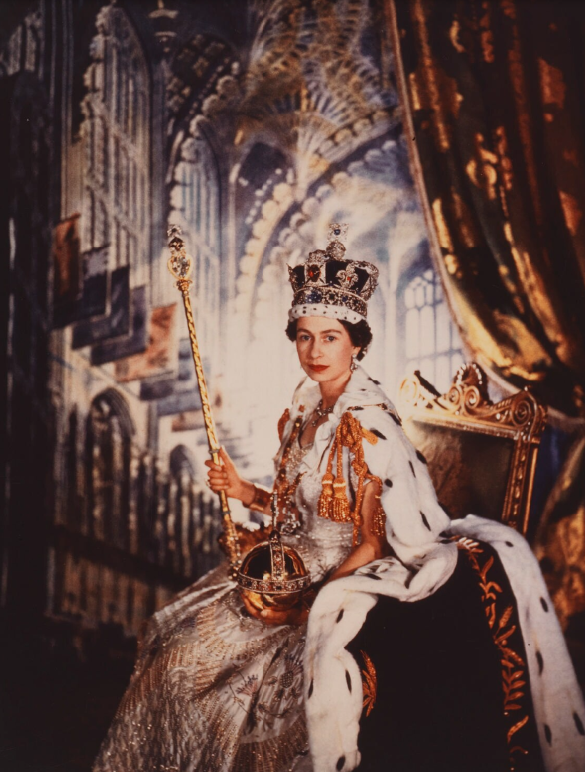
HM QUEEN ELIZABETH II
Photograph by Cecil Beaton
Cecil Beaton’s Coronation photographs differed greatly from those taken for the coronation of the HM Queen Elizabeth’s parents in 1937. His portrait shown above depicts HM Queen Elizabeth against a fabulous painted backdrop of Henry VII’s Lady Chapel in Westminster Abbey, wearing the Coronation Gown designed by the Queen Mother’s favourite, Norman Hartnell.
The serene beauty of HM Queen Elizabeth belied the behind the scenes battles between Prince Philip, the Queen Mother, the Prime Minister, Winston Churchill, the BBC & the courtiers. Prince Philip wanted to modernise and change the ceremony. He pushed for his photographer friend Sterling Henry Nahum (aka Baron) to be the official photographer for the coronation. Baron had been appointed the role of Court Photographer to the British Royal Family. He took the official photographs for many occasions such as the wedding of Philip to Princess Elizabeth in 1947, the christenings of their children, Charles and Anne and other occasions.
But the Queen Mother thoroughly disapproved of Baron’s somewhat racy reputation and of Prince Philip’s habit of socialising with Baron. She had the final word in this instance and so Cecil Beaton was tasked with creating the wonderful coronation portraits of HM Queen Elizabeth II.
Beaton was overjoyed;
‘The call from the Palace to say The Queen wanted me to do the Coronation photographs for posterity was such a relief as well as a joy and thrill.’
After the coronation Prince Philip was rather grumpy with Beaton and bossed him about giving instructions on how to take the best photograph etc. Beaton stood his ground and the results were breathtakingly beautiful. Although he did remark that he felt intimidated by this behaviour.
The B.B.C. pestered the royal family and the government to allow them to televise the coronation. Each time they were refused permission the B.B.C. leaked information to their allies in the press who stirred up support for televising the ceremony. Newspapers held polls and published the results showing the huge numbers of people who wanted to see the coronation.
The Prime Minister, Sir Winston Churchill, and other members of the cabinet implored the Queen to spare herself the strain of the heat and glare of the cameras, by refusing to have the ceremony televised.
Her Majesty’s devotion to service motivated her to reject the protestations of the government.
Nothing must stand between her crowning and her people’s right to participate.
On June 2nd 1953 at 11 o’clock all over Great Britain people sat down to watch the ceremony on black and white television sets.
Even the floor on which the throne was placed was a remarkable sight to behold. A delightful and very precious mediaeval cosmatesque floor lay protected by carpet.
Mediaeval Cosmatesque stone inlay designs are sometimes described as guilloche. These patterns resemble the designs the rose engines produced centuries later. The term Cosmatesque derives from the Cosmati family who are renown for their geometric inlay stonework which can be seen in buildings that date to the Mediaeval era. During this time their skills were much in demand to adorn churches in Rome. Four generations of the Cosmati family excelled in their craft and the inlay techniques became known as Cosmati or Cosmatesque.
Lorenzo, Jacopo, Cosimo, Luca, Deodato and Giovanni Cosmati were superb architects and sculptors.
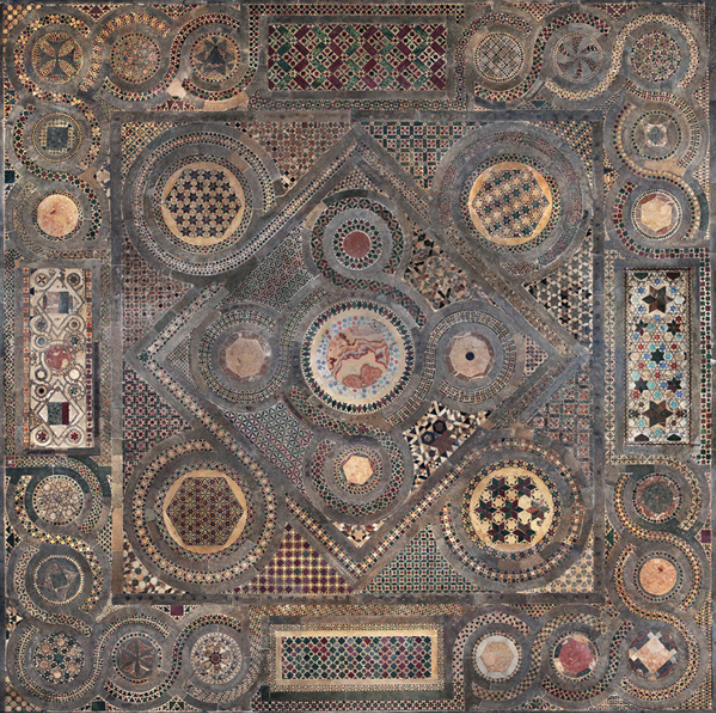
WESTMINSTER ABBEY COSMATI PAVEMENT
© Dean and Chapter of Westminster.
Admiration for their superb craftsmanship spread all over the world. Inspiring other artisans, sculptors and architects. Westminster Abbey has the most impressive Cosmatesque high altar floor. This mediaeval tile mosaic floor has recently been restored. A grant from the Getty Foundation helped to get this project underway. The process took two years.
The central point of this fabulous floor is where the throne is placed during the coronation of a monarch. Since the coronation of William the Conqueror, on Christmas Day 1066, every monarch (except for Edward V and Edward VIII who were never crowned) has been crowned here.
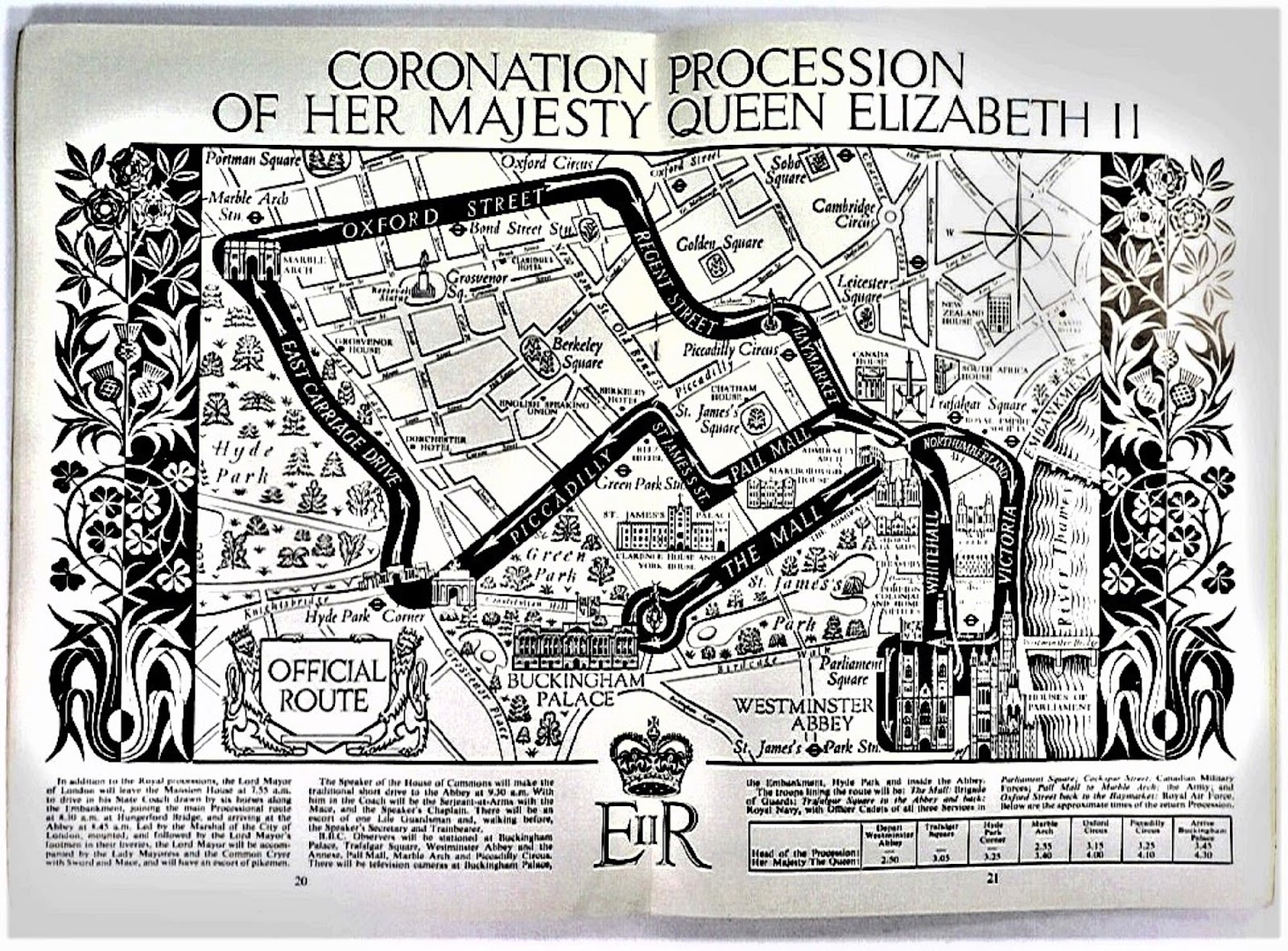
CENTRE PAGES OF THE CORONATION PROGRAMME
Care of vintage programmes etc:
We prevent moths from getting access to collectibles made from natural fibres by storing them in glass cabinets or in cupboards.
Packs of silica gel in pouches placed near to but not on the coronation programme will prevent moisture damage.
The programme should be displayed away from strong light / sunlight.
Clean dry gentle hands will not damage the paper.
Some people prefer to handle precious paper articles wearing soft cotton clothes especially if they have to moisturise their hands regularly.
Sources:
The Royal Collection Trust.
Dean and Chapter of Westminster.

